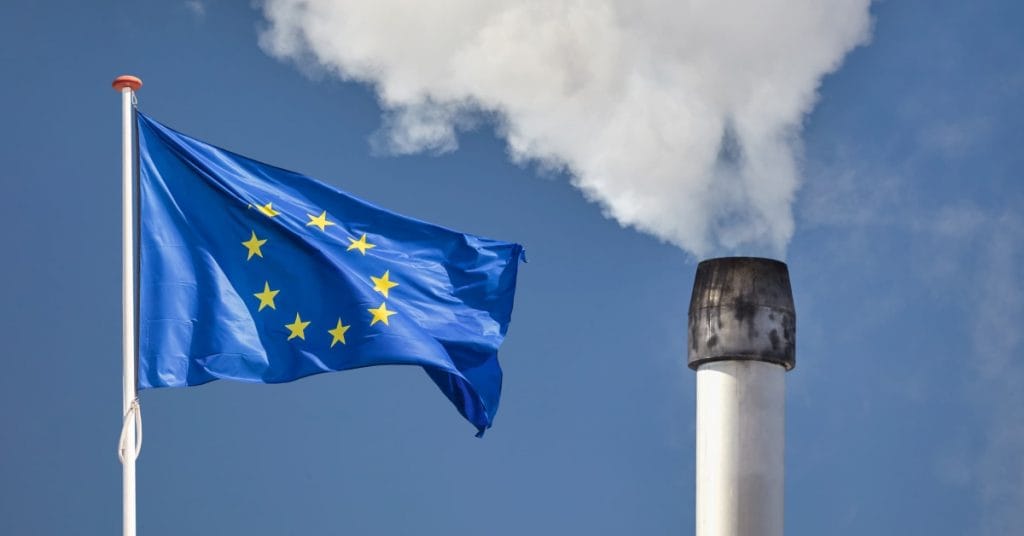EU Backs 90 Percent Emissions Cut by 2040 with Limited Use of Carbon Credits

• Parliament endorses 90 percent emissions reduction by 2040, with up to 5 percent met through foreign carbon credits.
• Target falls short of scientific advice for a 1.5°C-aligned pathway, yet positions the EU ahead of other major economies.
• Approval sets the stage for negotiations on implementation amid geopolitical pressure, industrial competitiveness concerns and rising defence spending.
Brussels Sets Course for a Harder 2040 Climate Line
The European Parliament has backed a legally binding target to cut greenhouse gas emissions by 90 percent by 2040, locking in the bloc’s most consequential climate directive for the next decade and shaping Europe’s bargaining stance in global climate diplomacy. The approval gives EU negotiators a mandate as they head into COP30, avoiding the optics of arriving without an updated trajectory toward their 2050 climate neutrality objective.
The plan passed with 379 votes in favour, 248 against and 10 abstentions after months of political tension and a late compromise that allows member states to meet up to 5 percent of the target through foreign carbon credits. That concession eases pressure on certain sectors but reduces the required domestic industrial emissions cuts to 85 percent from 1990 levels.
Scientific Advice, Political Realities and a Narrow Compromise
The EU’s scientific advisory board had urged a minimum 90 percent domestic cut without offsets to keep the bloc aligned with a 1.5°C pathway. The final deal leaves the EU shy of that benchmark, yet remains significantly more ambitious than commitments from most major economies, including China, whose current pledges fall short of steep mid-century reductions.
The compromise reflects the political cross-currents shaping European climate policymaking in 2024. Governments have been navigating energy security pressures, high industrial input costs and intensifying geopolitical risks, including expanded defence budgets and trade friction linked to U.S. tariffs. Some capitals pushed hard for flexibility, arguing industries could not absorb deeper reductions without undermining competitiveness or escalating subsidy demands.
Parliament also defeated an attempt by the far-right Patriots for Europe group to scrap the 2040 target outright, a move that would have reversed more than a decade of EU climate legislation and eroded the bloc’s standing in international climate talks.
Carbon Credits Enter the Framework Under Tight Scrutiny
Allowing carbon credits into the 2040 architecture offers member states an additional tool but introduces a new governance challenge. Credits have faced criticism for inconsistent methodologies and limited real-world impact. To address quality concerns, the Commission has committed to establishing strict criteria governing additionality, permanence and verification.
For investors and corporates, the inclusion of credits expands optionality in compliance strategies but will place a premium on traceability and assurance frameworks. Market participants will watch closely for alignment with the EU Carbon Removal Certification Framework and for clarity on how credit use interacts with the bloc’s Emissions Trading System.
What Executives and Investors Should Track Next
The next phase involves negotiations between Parliament and EU governments on the sectoral pathways required to deliver the target. These talks will determine the distribution of effort across power generation, manufacturing, transport, buildings and agriculture. They will also influence capital allocation signals, especially as Europe weighs industrial competitiveness against decarbonisation commitments.
RELATED ARTICLE: EU Eases Green Rules, Redefining the Future of Farm Subsidies
For C-suite leaders, three elements stand out.
First, regulatory stability. The EU’s 2040 target, once finalised, will set expectations for corporate transition plans, shaping disclosure under the Corporate Sustainability Reporting Directive and informing long-term capex.
Second, market design. The degree to which policymakers strengthen or soften ETS rules will determine carbon price trajectories, influencing investment decisions in steel, cement, aviation, shipping and chemicals.
Third, geopolitical alignment. As Europe increases defence spending and responds to global tariffs and subsidy races, climate policy may see renewed pressure from domestic industries seeking protection or transitional support.
A Global Marker as Climate Politics Tighten
The EU’s move sends a message ahead of COP30: despite internal tensions, the bloc remains committed to steep emissions reductions even as global politics become more fragmented. The final shape of the legislation will reveal whether Europe can balance economic headwinds with long-term climate governance, and whether it can maintain its role as a standard-setter in global environmental policy.
For international investors and policy analysts, the decision offers both clarity and complexity: a firmer long-term trajectory paired with new questions about financing, industrial transition and the credibility of carbon credit mechanisms.
The EU now enters the hardest phase — translating a high-level target into actionable pathways that maintain political cohesion at a time when climate ambition competes with defence, trade and industrial pressures across the bloc.
Follow ESG News on LinkedIn












